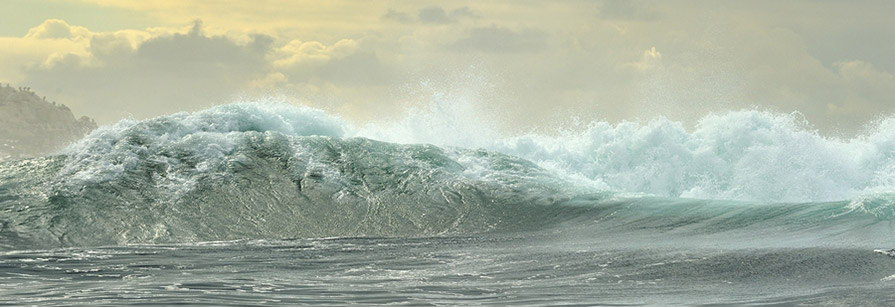Breakers

Source: SURZ/Bigstock.com
The water becomes shallower and the movement of the wave changes, the forward motion differs between the top and bottom of the wave. The top of the wave continues to move at the original speed, as the bottom of the wave slows. Eventually, the top of the wave moves ahead of the bottom and the wave starts to break. This breaker is the foamy mass of water that reaches the coastline.
There are three main types of breaking waves:
Plunging waves form where there is a steep sloping bottom. These waves can be identified by their tubes, or barrels, that curls down into the trough before the wave breaks. This break releases all of the wave’s energy at one time. These are the waves that are most commonly thought of as “surfing” waves. If the ocean floor is extremely steep, the plunging wave becomes a collapsing wave, since the top of the wave breaks on the lower part of the wave.
Spilling waves form when fast-moving water encounters gradual changes in the slope of the coastline. Water from the top of the wave spills over the slower moving bottom over a distance. The energy of the breaking wave is transferred to the front face the wave and appears as a line of foam. While this type of wave does not create a tube, surfers are able to ride these waves for longer periods of time.
Surging waves are large waves that suddenly encounter an extremely steep slope of the shoreline. These waves do not break; they surge onto the beach without much of the energy dissipating. This rapid movement of the base of the wave leaves the face of it smooth with very little foam. Surging waves have a very narrow surf zone, making them unappealing to surfers.